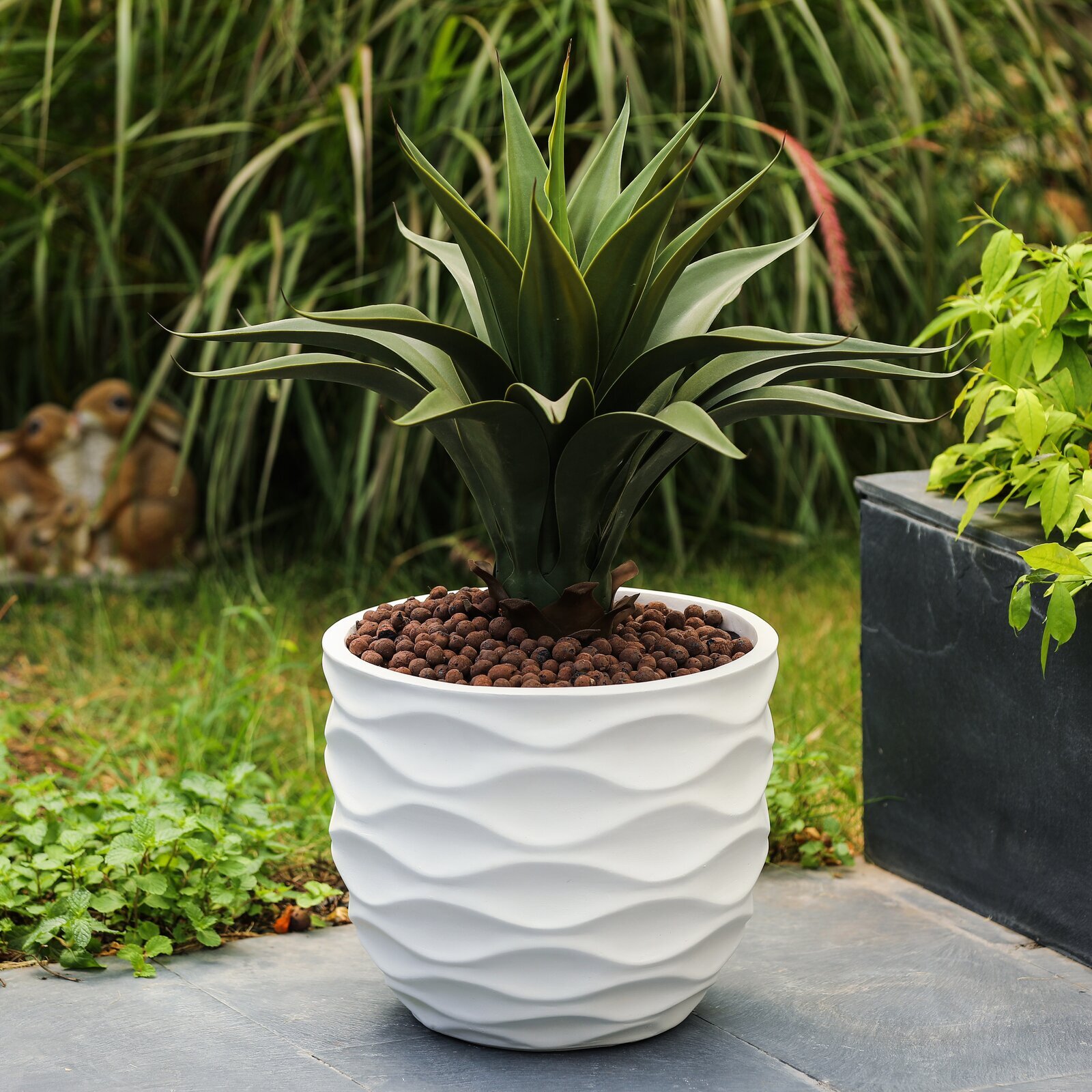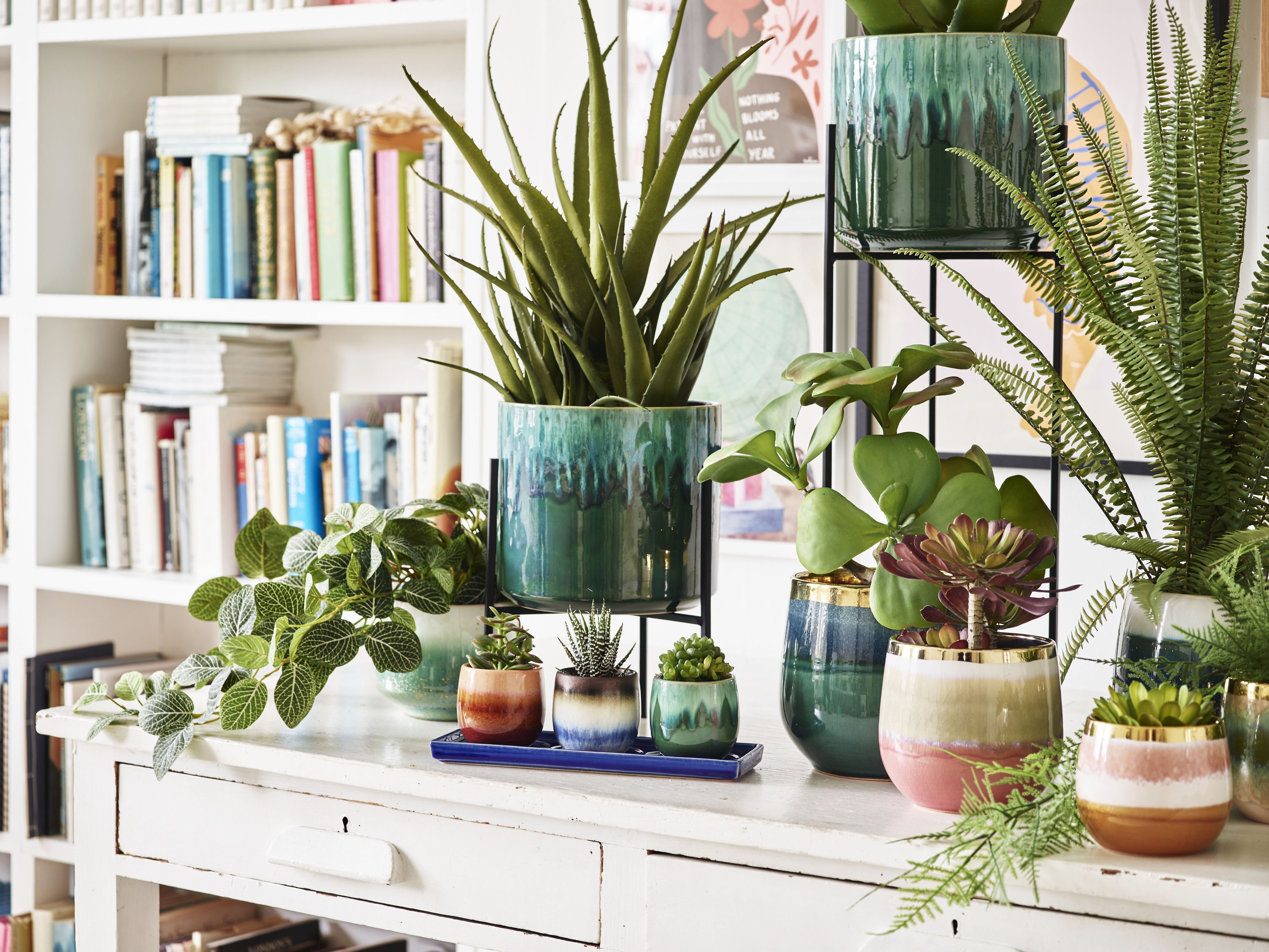Cool indoor plant pots are not just containers for your greenery; they are statement pieces that can transform the aesthetics of any room. From contemporary designs to sustainable materials and creative uses, this guide delves into the fascinating world of indoor plant pots, empowering you to create a thriving indoor oasis that reflects your personal style.
With a plethora of options available, choosing the right indoor plant pots can be an exciting yet daunting task. This comprehensive guide will provide you with all the information you need to make informed decisions, ensuring that your plants flourish and your home decor shines.
Contemporary Designs for Indoor Plant Pots

The world of indoor plant pots has undergone a significant transformation in recent years, with contemporary designs emerging that not only enhance the aesthetics of any room but also cater to the specific needs of plants. These innovative and stylish pots are crafted from a wide range of materials, come in various shapes and sizes, and feature a vibrant array of colors.
Materials
Contemporary indoor plant pots are made from a diverse range of materials, each offering unique advantages and aesthetic appeal. Ceramic pots are a popular choice due to their durability, heat retention, and ability to regulate moisture levels. Plastic pots are lightweight, affordable, and come in a wide variety of colors and shapes. Metal pots, such as those made from copper or brass, add a touch of elegance and can complement modern or industrial-style décor. Terracotta pots are porous, allowing for good air circulation and drainage, making them ideal for plants that prefer drier conditions.
Shapes
The shape of an indoor plant pot can significantly impact the plant’s growth and well-being. Round pots are suitable for most plants, as they provide ample space for root development. Square or rectangular pots are space-saving options that can be arranged neatly on shelves or windowsills. Hanging pots are a great choice for trailing plants or those that require more light. Pots with drainage holes are essential for preventing waterlogging, which can lead to root rot. The size of the pot should be appropriate for the size of the plant, with enough room for the roots to grow without becoming overcrowded.
Colors
The color of an indoor plant pot can influence the overall ambiance of a room. Neutral colors, such as white, black, or gray, create a classic and sophisticated look. Bright colors, such as red, yellow, or blue, can add a pop of energy and vibrancy to a space. Pastel colors, such as pink, lavender, or mint green, evoke a sense of calm and tranquility. The color of the pot should complement the color of the plant’s foliage and flowers, as well as the décor of the room.
Materials and Sustainability in Indoor Plant Pots

The choice of material for indoor plant pots has a significant impact on the plant’s health, aesthetics, and environmental footprint. Here’s a comprehensive guide to the advantages, disadvantages, and sustainability of different materials used in indoor plant pots.
Ceramic
Ceramic pots are a popular choice for their durability, breathability, and aesthetic appeal. They come in a wide range of shapes, sizes, and colors, making them suitable for various plant species and decor styles.
- Advantages: Ceramic pots are porous, allowing for proper aeration and drainage, which is crucial for healthy root growth. They are also relatively heavy, providing stability and preventing the pot from toppling over.
- Disadvantages: Ceramic pots can be fragile and prone to chipping or breaking if handled carelessly. They are also heavier than other materials, which can be a consideration for larger pots or if you need to move them frequently.
- Sustainability: Ceramic is a natural material made from clay, which is abundant and renewable. However, the manufacturing process can be energy-intensive, and the use of glazes and paints can introduce potential environmental concerns.
Plastic
Plastic pots are lightweight, affordable, and come in a variety of colors and styles. They are also resistant to moisture and fading, making them suitable for outdoor use or areas with high humidity.
- Advantages: Plastic pots are lightweight and easy to handle, making them ideal for larger plants or frequent repotting. They are also less expensive than other materials, which can be a consideration for budget-conscious plant enthusiasts.
- Disadvantages: Plastic pots can be less breathable than other materials, which can lead to waterlogging and root rot if not properly drained. They are also not as durable as ceramic or metal pots and can become brittle over time.
- Sustainability: Plastic is a non-biodegradable material, and its production can contribute to greenhouse gas emissions. However, some manufacturers are now using recycled plastics to reduce the environmental impact.
Metal, Cool indoor plant pots
Metal pots are known for their durability, sleek appearance, and ability to withstand extreme temperatures. They are often used for large plants or in outdoor settings.
- Advantages: Metal pots are highly durable and can withstand heavy use and harsh weather conditions. They are also non-porous, which prevents waterlogging and root rot.
- Disadvantages: Metal pots can be heavy and expensive, making them less suitable for smaller plants or frequent repotting. They can also heat up quickly in direct sunlight, which can be harmful to plants.
- Sustainability: Metal is a recyclable material, and many metal pots are made from recycled aluminum or steel. However, the manufacturing process can be energy-intensive, and some metals may contain harmful chemicals.
Creative Uses for Indoor Plant Pots: Cool Indoor Plant Pots

Beyond their traditional purpose of housing plants, indoor plant pots offer a wealth of creative possibilities. They can be incorporated into home decor, creating vertical gardens, or used as storage solutions. Plant pots also provide a canvas for artistic expression, allowing individuals to personalize their living spaces.
Decorative Accents
Plant pots can be used as decorative accents throughout the home. By choosing pots with unique shapes, colors, or textures, individuals can add visual interest to any room. Pots can be placed on shelves, tables, or windowsills to create a cohesive and stylish look.
Vertical Gardens
Plant pots can be utilized to create vertical gardens, a space-saving solution for urban dwellers or those with limited outdoor space. By mounting pots on walls or trellises, individuals can maximize vertical space and create a lush, green oasis indoors.
Storage Solutions
Plant pots can also serve as practical storage solutions. Larger pots can be used to store blankets, pillows, or toys, while smaller pots can be used to organize office supplies or bathroom essentials. By incorporating plant pots into storage, individuals can create a functional and aesthetically pleasing space.
Artistic Expression
Plant pots offer a unique medium for artistic expression. Individuals can paint, decoupage, or mosaic pots to create one-of-a-kind pieces that reflect their personal style. Plant pots can also be used as canvases for displaying artwork or photography.